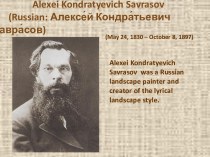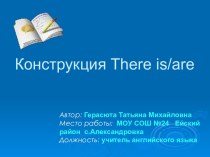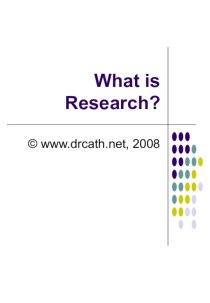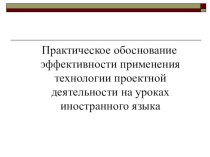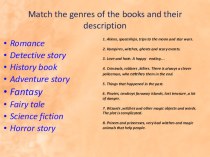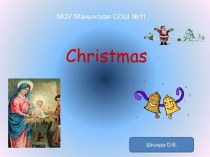- Главная
- Разное
- Бизнес и предпринимательство
- Образование
- Развлечения
- Государство
- Спорт
- Графика
- Культурология
- Еда и кулинария
- Лингвистика
- Религиоведение
- Черчение
- Физкультура
- ИЗО
- Психология
- Социология
- Английский язык
- Астрономия
- Алгебра
- Биология
- География
- Геометрия
- Детские презентации
- Информатика
- История
- Литература
- Маркетинг
- Математика
- Медицина
- Менеджмент
- Музыка
- МХК
- Немецкий язык
- ОБЖ
- Обществознание
- Окружающий мир
- Педагогика
- Русский язык
- Технология
- Физика
- Философия
- Химия
- Шаблоны, картинки для презентаций
- Экология
- Экономика
- Юриспруденция
Что такое findslide.org?
FindSlide.org - это сайт презентаций, докладов, шаблонов в формате PowerPoint.
Обратная связь
Email: Нажмите что бы посмотреть
Презентация на тему по английскому языку по теме:Язык программирования(Lisp)
Содержание
- 2. Biography Of John McCarthyJohn McCarthy was born
- 3. Lisp creation processIn 1956-1959, John McCarthy, along
- 4. The name of the language is derived
- 5. Advantages Of Lisp In
- 6. Basic Lisp conceptLisp is the earliest representative
- 7. In a procedural language the code is
- 8. The interactivity and flexibility of
- 9. Скачать презентацию
- 10. Похожие презентации
Biography Of John McCarthyJohn McCarthy was born in 1927 in Boston, Massachusetts. His parents, John Patrick and IDA Glatt McCarthy, were immigrants, his father was Lithuanian, and his mother was Jewish. Young John showed early success
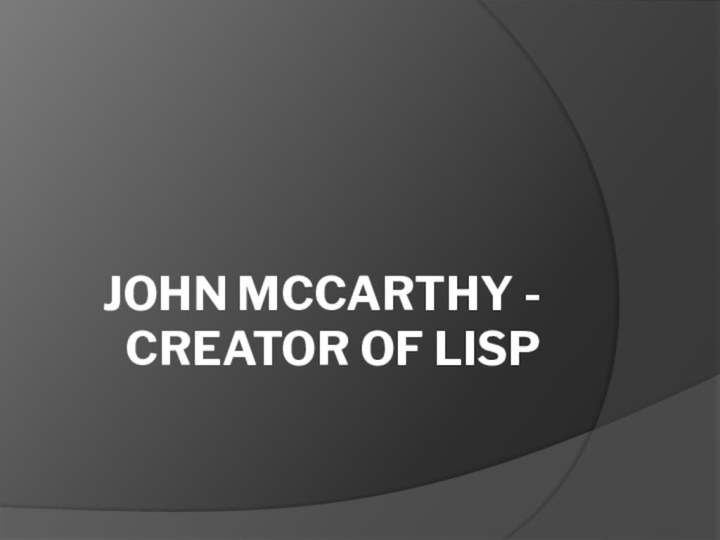
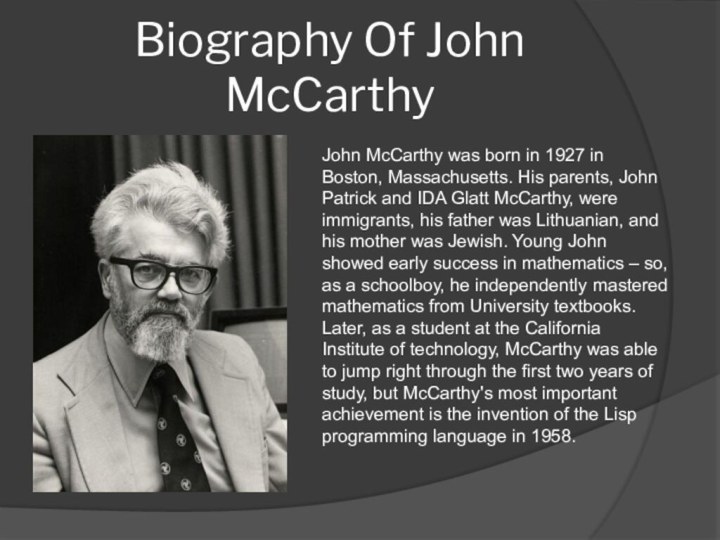


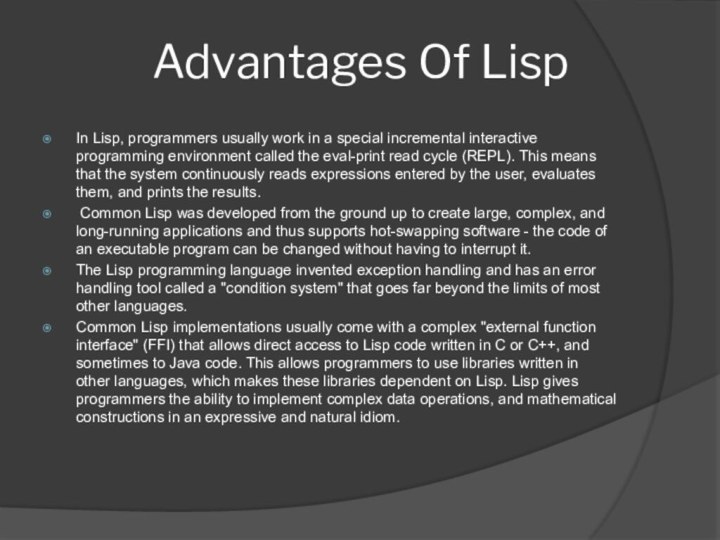
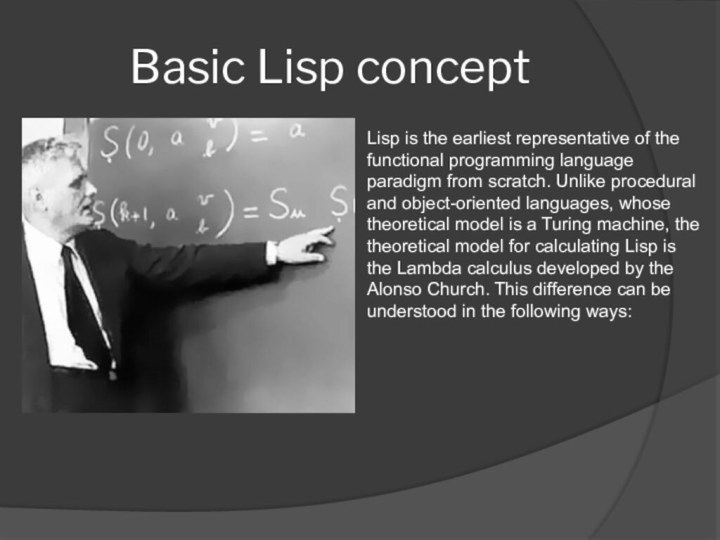
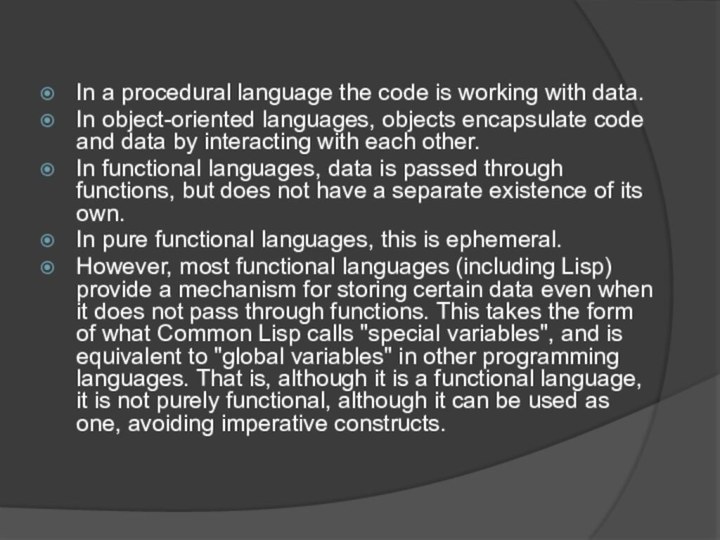


Слайд 3
Lisp creation process
In 1956-1959, John McCarthy, along with
students at the Massachusetts Institute of technology (MIT), developed
a new elegant language for working with lists, which he gave the name LISP. And many students have made a significant contribution to this development. In particular, D. Edwards programmed the process of clearing memory of unnecessary arrays, the so-called garbage collection, which is a fundamental concept in LISP.Слайд 4 The name of the language is derived from
the abbreviation of the English words LISP Processing, which
means "list processing". LISP programs and data exist in the form of symbolic expressions that are stored as list structures. LISP deals with two types of objects: atoms and lists. Atoms are symbols used to identify objects that can be numeric or symbolic (concepts, materials, people, etc.). A list is a sequence of zero or more elements enclosed in parentheses, each of which is either an atom or a list.
Слайд 5
Advantages Of Lisp
In Lisp,
programmers usually work in a special incremental interactive programming
environment called the eval-print read cycle (REPL). This means that the system continuously reads expressions entered by the user, evaluates them, and prints the results.Common Lisp was developed from the ground up to create large, complex, and long-running applications and thus supports hot-swapping software - the code of an executable program can be changed without having to interrupt it.
The Lisp programming language invented exception handling and has an error handling tool called a "condition system" that goes far beyond the limits of most other languages.
Common Lisp implementations usually come with a complex "external function interface" (FFI) that allows direct access to Lisp code written in C or C++, and sometimes to Java code. This allows programmers to use libraries written in other languages, which makes these libraries dependent on Lisp. Lisp gives programmers the ability to implement complex data operations, and mathematical constructions in an expressive and natural idiom.
Слайд 6
Basic Lisp concept
Lisp is the earliest representative of
the functional programming language paradigm from scratch. Unlike procedural
and object-oriented languages, whose theoretical model is a Turing machine, the theoretical model for calculating Lisp is the Lambda calculus developed by the Alonso Church. This difference can be understood in the following ways:Слайд 7 In a procedural language the code is working
with data.
In object-oriented languages, objects encapsulate code and
data by interacting with each other. In functional languages, data is passed through functions, but does not have a separate existence of its own.
In pure functional languages, this is ephemeral.
However, most functional languages (including Lisp) provide a mechanism for storing certain data even when it does not pass through functions. This takes the form of what Common Lisp calls "special variables", and is equivalent to "global variables" in other programming languages. That is, although it is a functional language, it is not purely functional, although it can be used as one, avoiding imperative constructs.









